
Click to Skip Ahead
Turtles are adaptable animals that live in both water and land. These reptiles have been in existence for millions of years and adapt well to any environment. As some live in the oceans, others thrive in freshwater streams and rivers.
You might also find turtles living in the open deserts, sea, or even icy areas. In such extreme conditions, they hibernate to endure the cold winters. Where these creatures live and how they breed are dependent on the species they belong to. On average, wild turtles usually live for 20-30 years, but captive turtles can live much longer.
What’s the Average Lifespan of a Turtle?
Some turtles, including the Aldabra tortoise, Galapagos tortoise, and Seychelles tortoise, often live for more than a century. Small species such as red-eared sliders and box turtles have a wild lifespan of 20 to 30 years, although occasional specimens can live up to 50 years or more. Domesticated turtles, provided with unlimited food, protection from predators, and veterinary care, often live longer than their wild counterparts.
Why Do Some Turtles Live Longer Than Others?
Although turtles are one of the longest-living creatures in the animal kingdom, the lifespan of a pet turtle will depend on the attention and care they receive.
Without enough care and nutrition or if put in a stressful environment, turtles may die sooner. Here are some of the factors that can determine how long your turtle lives.
1. Nutrition
Turtles are herbivores, so the best way to help keep your turtle live a long life is to ensure you feed it plants. Some species have been known to take a curious insect nibble, but the safest course of action for turtles is to keep veggies all the time. Fruits can be used as a treat but should be added in moderation to avoid obesity.
Turtle requires a constant supply of calcium to keep their shells healthy. Use supplements to compensate for any calcium deficiency in their food. Overfeeding has a detrimental impact on turtle health, so pay attention to the quantity of food you give.
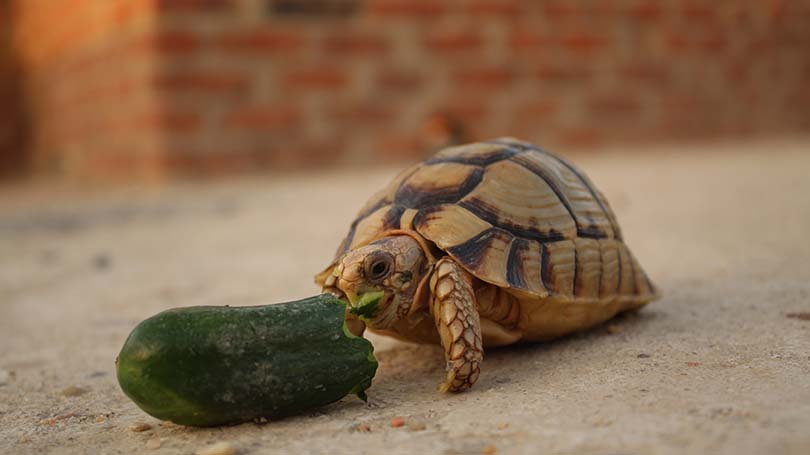
2. Environment and Conditions
Turtles are exoderms, so they cannot regulate their body temperature. Their metabolic rate is dependent on the external environmental temperature.
Because turtles cannot withstand cooler temperatures, they hibernate in winter. Deep sleep helps them to preserve energy and survive until springtime when food is easy to find.
Pet turtles don’t hibernate when in a temperature-regulated environment. Keep their tank or enclosure warm with a water heater and use a temperature regulator to maintain the temperature between 75 degrees Fahrenheit and 82 degrees Fahrenheit.
Turtles require sunlight to release Vitamin D, which keeps their shell healthy. If your terrarium or tank is indoors, use an artificial light source to supply UVA and UVB.
Line the sides of the terrarium with mud and rocks to make it mimic its natural habitat. Your turtle will enjoy digging and hiding in the mud and giving in to its intuition. In addition, you can line the tank with non-toxic plants that the pet can feed on.
3. Enclosure Size/Living Quarters/Housing
Pet turtles need relatively elaborate housing. They require regular exposure to Ultraviolet light, so bulbs designed for reptiles that produce UVA and UVB light are necessary for turtle tanks. Without ample light, metabolic bone disease may result.
Turtles are messy, so they require a good filtration unit to help maintain water quality, as will routine cleaning. They need deep enough water to allow swimming and a place to come out of the water and bask. In addition, ensure you have maintained appropriate water and ambient temperatures.
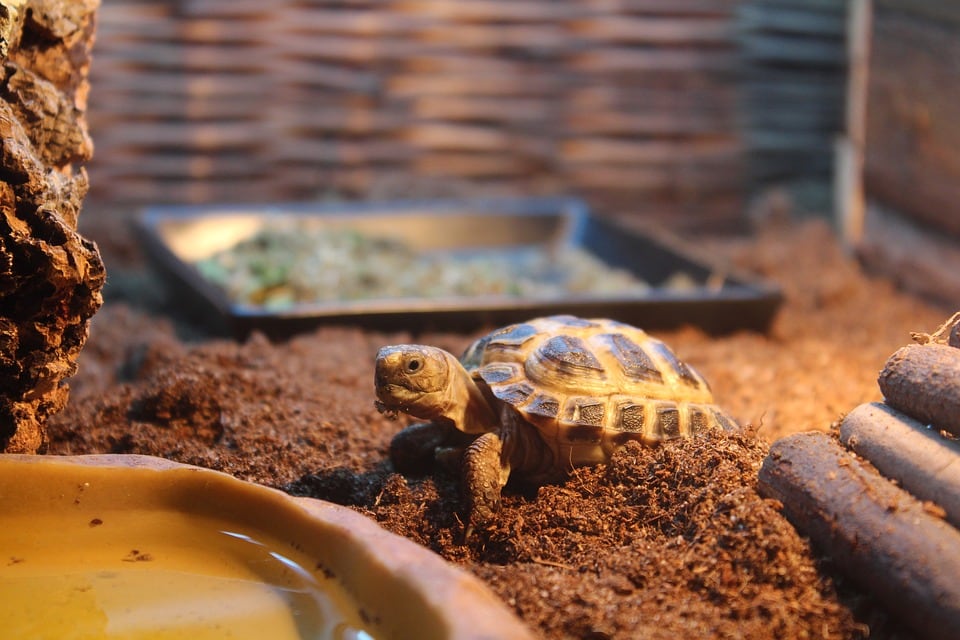
4. Size
Generally, the larger an animal is, the longer it can live. In the case of turtles, that is undoubtedly true. The longest-lived turtles tend to be the large breed. That means it is unlikely that your small pet turtle will live for centuries.
However, that size also comes from the relative safety of an isolated life, a good environment, and ample food that encourages growth. A giant breed kept in a terrible, dirty, and bacteria-laded tank will not grow as large or live as long as one kept in a fresh, large tank.
5. Sex
In most turtle species, females live longer than males since males tend to be aggressive. Aggression in males is mainly due to competing for a mate. In many species, fighting for a mate leads to injuries and high stress levels.

6. Genes
The action of a single gene can have significant impacts on how long a creature lives. That may seem hard to believe since so many things go into determining lifespan, including several lifestyle factors and some health conditions. However, significant effects on lifespan are seen when specific genes are detected from a turtle’s genetic sequence.
7. Breeding History
All turtles lay their eggs on water or land, and none show parental care. However, amidst this apparent uniformity, there are various reproductive ecologies, behaviors, and physiologies. How long your turtle lives depend on the parent breed and how it was reproduced
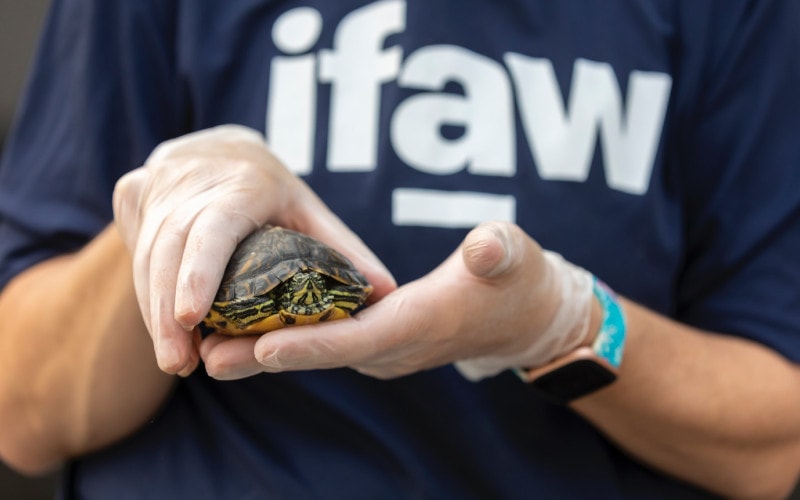
8. Health Care
The care and attention you give your pet turtle will play a significant role in how long they live. Turtles need to be kept in a clean, hygienic environment and handled with care.
When a turtle is ill, it might not show symptoms until the illness progresses further. So, continually monitor their health closely and if you notice anything abnormal, take them to a qualified vet for treatment. Prompt treatment will help you nurse them back to health.
Turtles are not social animals, so be careful about who they share their living space with. Keeping more than one turtle in a tank can sometimes result in fights. They may also acquire infections from their tank mates.
The 3 Life Stages of a Turtle
Regardless of their basic differences, a turtle’s lifecycle has a similar pattern to that of the reptile species. Each species goes through the basic lifecycle of a reptile. The lifecycle of a turtle begins when the female lays the eggs on the water or land.
Here are the three main life stages:
1. Nesting Stage
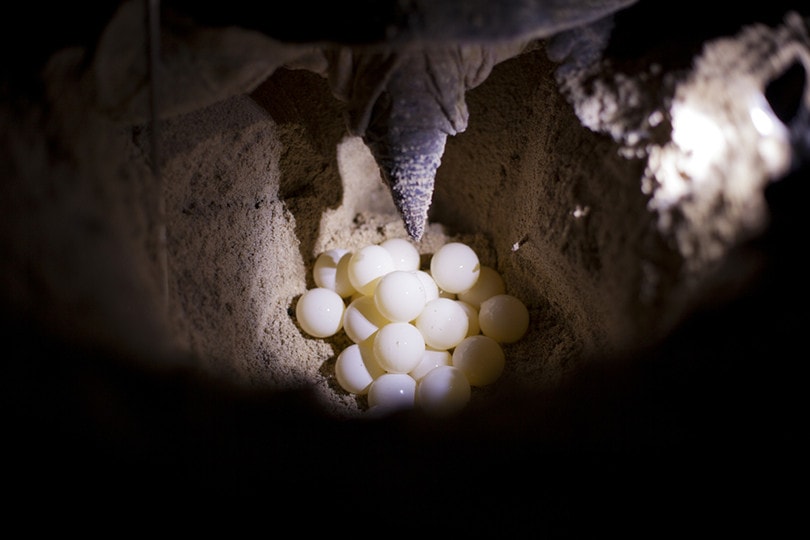
During the nesting season, most adult female turtles come to the warm water to lay their eggs. Although some sea turtles lay their eggs underwater or on moss beds, most female turtles dig holes in mud or sand and put their eggs in clutches made up of 1-100 eggs. They then bury the eggs to await hatchling.
Unlike the large Asian tortoise, mother turtles don’t remain near their eggs to protect them. The eggshell is elastic but strong and requires the hatchling to use the egg tooth to break through the eggshell when it is ready to emerge, often in 2 to 3 months.
After each nesting period, the adult female turtle returns to the feeding area to freshen its energy for the next nesting season. That takes about one year and, in some cases, many years.
2. Hatchling Stage

In some turtle species, temperature determines the sex of hatchlings. In cooler temperatures, males emerge from the hatching eggs, while in cooler temperatures, females emerge. The hatchlings use an egg tooth to break through the eggshell and then head for the water immediately.
Sea turtles spend their first years in the ocean, and most are omnivorous during this phase, eating animal matter and plants. Turtles that live mainly on land usually dig holes in the soil with their solid and rough feet to keep cool. In addition, they remain inside their shells to protect their bodies from drying out and keep them safe from predators.
This stage in their life may last for around ten years and is usually known as the lost year. That is because this phase in turtles’ life is relatively tricky for survival, and their whereabouts may remain unknown.
3. Adulthood
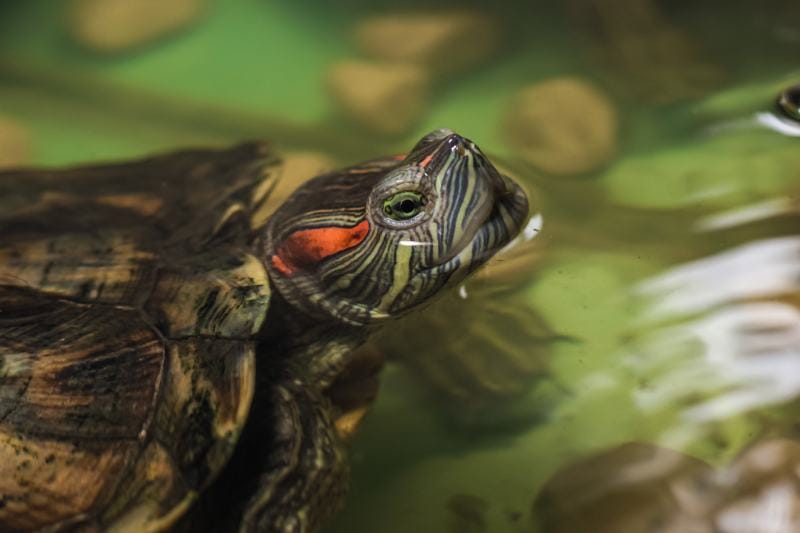
About 20-50 years after hatching, turtles become sexually mature and attain adulthood based on their species. Adult turtles may live on either water or land.
They can remain underwater for long periods but must come out for air frequently since they have lungs instead of gills. When it is time for breeding, the male usually mates with the female by rubbing up against her.
Other turtle species may nibble at the female’s eggs or bump shells with her. Some female turtles will carry their fertilized eggs for a year or more and lay them little by little over time. Neither parent is involved in nurturing the hatchlings.
An adult turtle can grow up to 5 and 6 inches in length and weigh about 1500 pounds. The mature adult often feeds on seaweed, seagrass, and algae. In addition, they can feed on tiny creatures such as shrimp, jellyfish, crabs, sea sponges, and snails.
How To Tell Your Turtle’s Age
Knowing a turtle’s birthdate is one of the most accurate ways of determining its age since you can easily count the years and months since its birth. Unfortunately, this is also the only way to be truly sure of any turtle’s age. It is the only reliable method since all other methods involve some guesswork.
However, if you already have a turtle and you were not there to witness its birth, this method will not be of much help. Luckily, there are a few ways for you to make informed guesses about your turtle’s age.
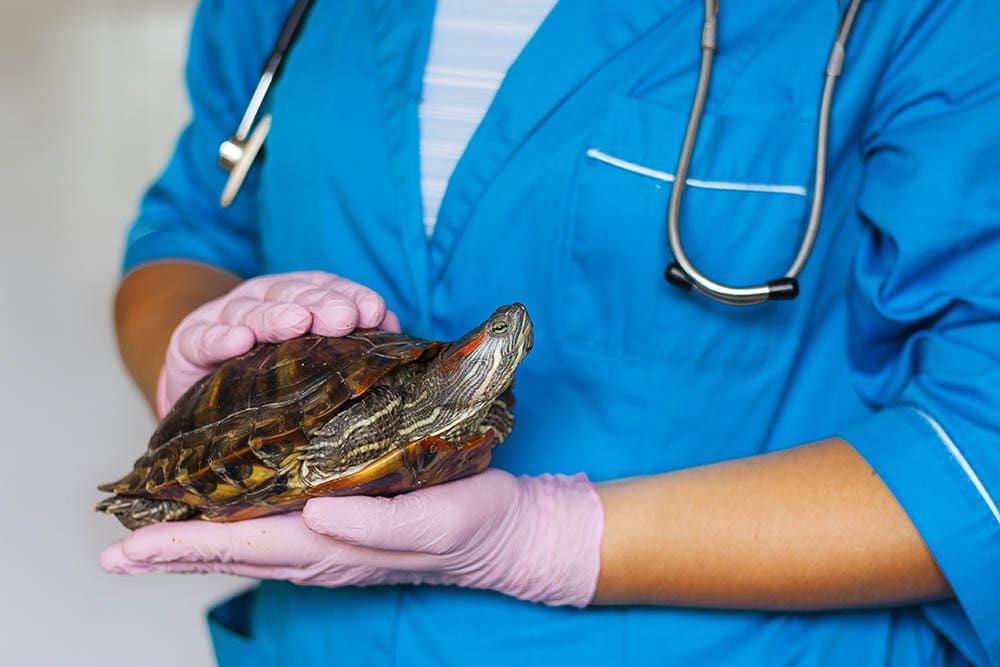
Measure Your Turtle to Guess Their Age
Even experts cannot accurately tell a turtle’s age when they don’t know for sure when it was born. However, when taking your turtle’s measurements, you can use species standards to make an educated estimate about how old your turtle is.
Start by measuring the length of its carapace. That will give you the length from the front of the shell to the back of its tail. Once you know the length of your turtle’s carapace, you will be required to compare that to a size chart for that specific turtle species.
Make sure to find a size chart that matches your turtle’s species. Different species can reach significantly different sizes, so you will get wildly inaccurate results when comparing your turtle’s length to a size chart for different species.
Ask for an Expert’s Opinion
If you have tried measuring your turtle but are still not sure that you have gotten a satisfactory accurate age, it might be time to look for a more experienced person in the matter. You can look for a vet who specializes in amphibians and reptiles and has a lot of experience in them. Such a professional may be able to give you more insight into your turtle’s age than you can gather on your own.
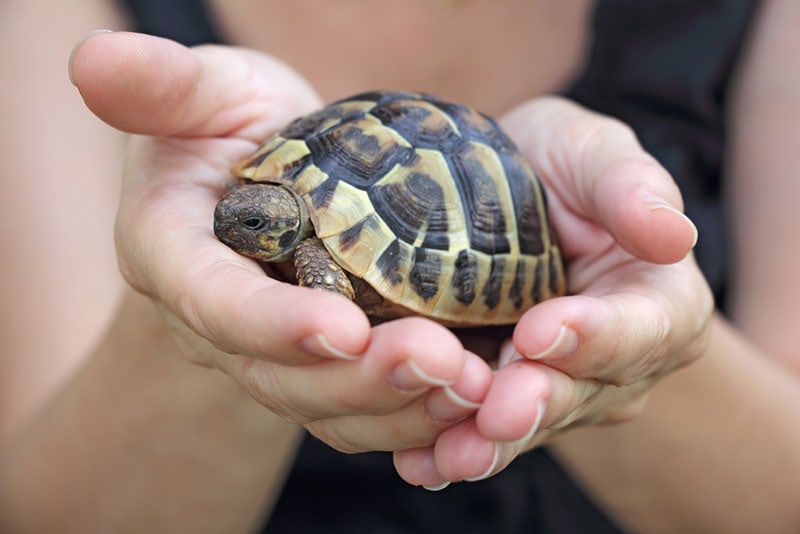
Conclusion
If you are looking for a pet that can live for ages, a turtle might be perfect for you. Their natural adaption and slow metabolism help them live for decades.
Pet turtles, such as the Red-Eared Slider, which is the most common species, live about 30 to 40 years, but some pet turtle species can live even longer, up to 100 or more years
However, the lifespan of a turtle will depend on how well you care for it. You need to provide your turtle with clean water, good nutrition, and a stress-free living condition. With proper care, your turtle will grow, thrive, and give you a companion for much longer than any other pet.
Next on your reading list:
Featured Image Credit: Kurit afshen, Shutterstock







